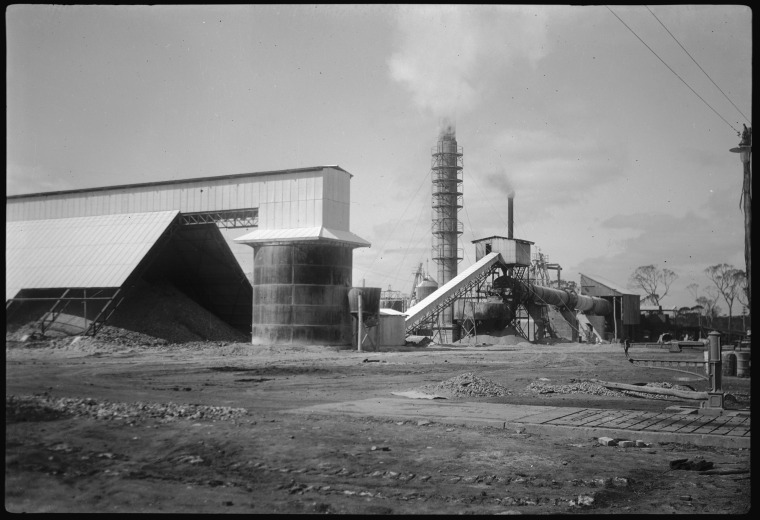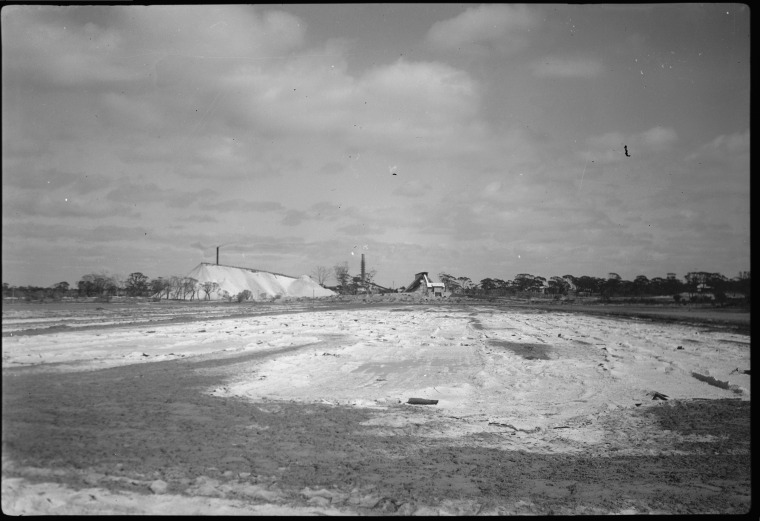The principal use of potash is as fertiliser although it has many other industrial uses. With the onset of WWII supplies to Western Australia were cut off. The state government established an alunite mine (a source of potash) at Lake Campion, south-east of Mukinbudin and a potash works was erected in 1943. Land was set aside in 1942 for the townsite of Chandler.
Once supply of alunite had normalised following the war, the government closed down the plant. Australian Plaster Industries then took up a lease in the area and in 1949 commenced production of gypsum – used in the manufacture of plasterboard. Chandler boomed and had two main streets, over 70 houses, a telephone exchange, a school and powerhouse. Production of gypsum ceased in 1952 resulting in the entire town being sold off in 1953.
The town was named after local farmer Mr J. Chandler, who discovered the alunite deposits.
- Chandler Potash Works.
- Lake Campion at Chandler.
- Potash works and town.
- Stockpile.
The reports of the various trips, tours and travels on the Adventures website have a lot of information about place names – their naming and features – toponymy. More information.
© Kim Epton 2016-2024
223 words, four photographs.
Feel free to use any part of this document but please do the right thing and give attribution to adventures.net.au. It will enhance the SEO of your website/blog and Adventures.
See Terms of Use.




